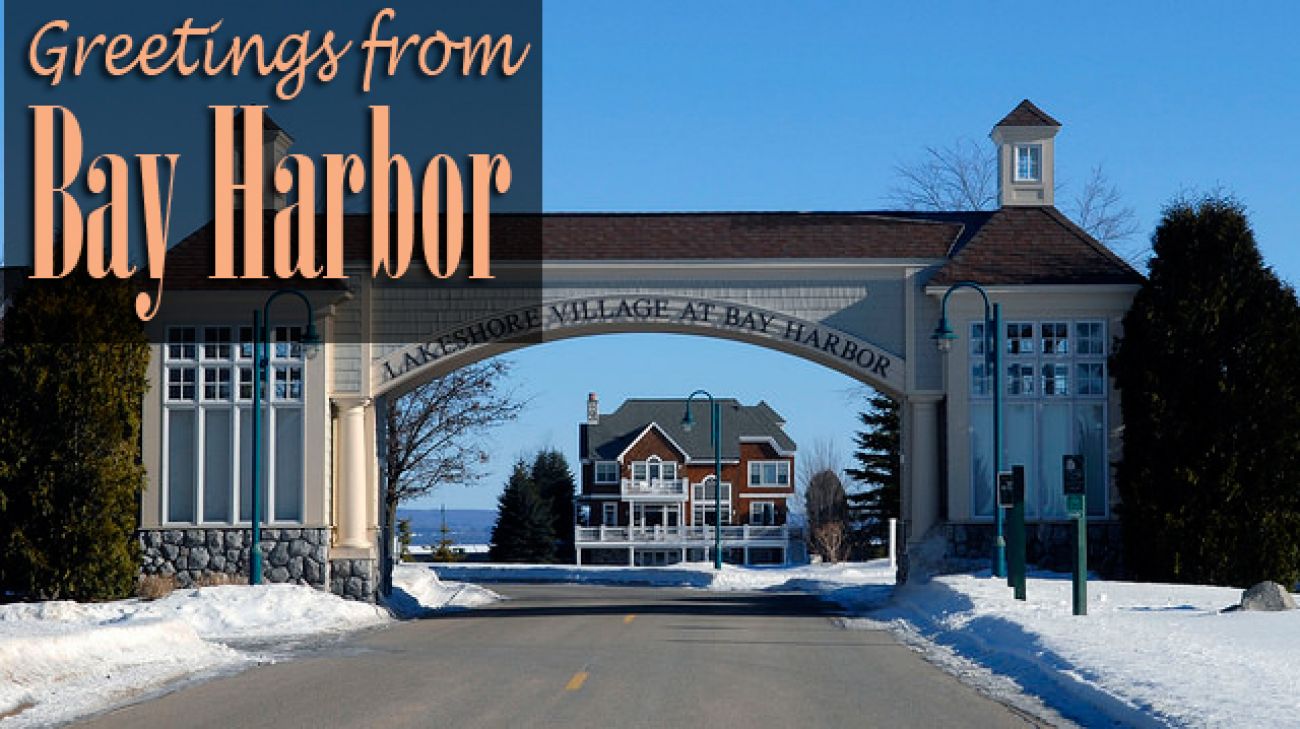Postcard: Luxe life at Bay Harbor reflects changing economy

NEXT POSTCARD: A roof and a bed →
If you wanted a 1,200-acre metaphor for the way life has changed in northern Michigan over the last few generations, you could hardly do better than Bay Harbor, the luxury mixed-use development that covers five miles of Lake Michigan shoreline between Charlevoix and Petoskey. It was once site of the Penn-Dixie cement plant, which produced 85 percent of the cement used in construction of the Mackinac Bridge in the 1950s. That plant provided industrial union jobs to about 150 workers when the company declared bankruptcy in 1980. It was sold and closed the following year, and for more than a decade sat empty.
In 1990 the property was sold to developers, and a few years later construction began. The plant’s limestone quarry wall was dynamited, the lake rushed in, and the harbor of Bay Harbor took shape. What followed, and what continues, is the construction of expensive homes, a golf course, an equestrian center, yacht club, shopping, dining, condos, cottages, a hotel and more. Even in the off season, it is an arresting sight, its buildings rearing over the ice of Little Traverse Bay in neo-Victorian architectural harmony.
Denny Brya, general manager of the Bay Harbor Co., estimates all the various associations, clubs and corporate entities at Bay Harbor employ about 700 during high season, from hotel maids to golf pros to landscapers. A fact sheet provided by the company boasts a considerable economic impact: In the last 20 years, the development has generated over $183 million in tax revenues to local and state government, including $100 million to schools, $50 million to the city of Petoskey, $20 million to Emmet County and $8 million to North Central Michigan College.
Both Brya and Bay Harbor Chief Financial Officer Jill O’Neill are Michigan natives, Lansing and Saginaw respectively, and say that despite their white-collar jobs, they have something in common with local residents who are doing less well: The affirmative choice to stay in northern Michigan. A corporate CFO could earn more elsewhere, O’Neill says, but probably not in such a beautiful environment: “Up here,” she noted, “they say ‘a view of the bay is half your pay.”
– Nancy Derringer
Business Watch
Covering the intersection of business and policy, and informing Michigan employers and workers on the long road back from coronavirus.
- About Business Watch
- Subscribe
- Share tips and questions with Bridge Business Editor Paula Gardner
Thanks to our Business Watch sponsors.
Support Bridge's nonprofit civic journalism. Donate today.
See what new members are saying about why they donated to Bridge Michigan:
- “In order for this information to be accurate and unbiased it must be underwritten by its readers, not by special interests.” - Larry S.
- “Not many other media sources report on the topics Bridge does.” - Susan B.
- “Your journalism is outstanding and rare these days.” - Mark S.
If you want to ensure the future of nonpartisan, nonprofit Michigan journalism, please become a member today. You, too, will be asked why you donated and maybe we'll feature your quote next time!

